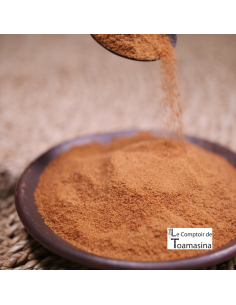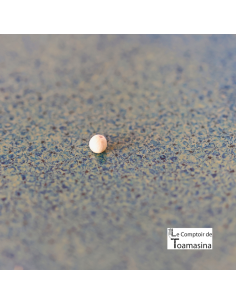It is essential to avoid powdered saffron, which is often adulterated and less flavorful. Some unscrupulous sellers mix paprika with saffron powder. Always prefer pistil saffron.
To buy good saffron, learn to recognize the real pistil. The real saffron pistil is blood red in color. The whitish or yellow pistils are of poor quality and offer inferior taste.
Saffron Grades
The quality of saffron is evaluated according to four grades, based on its physicochemical characteristics:
Grade 1:
- Safranal ≥ 120 mg/g
- Picrocrocin ≥ 70 mg/g
- Crocin ≥ 190 mg/g
- Total ash ≤ 8%
- Foreign materials ≤ 0.1%
This grade, the noblest, offers an intense flavor, a deep red-orange color and a high concentration of aromatic and coloring compounds. Perfect for fine dining and special occasions.
Grade 2:
- Safranal ≥ 90 mg/g
- Picrocrocin ≥ 55 mg/g
- Crocin ≥ 150 mg/g
- Total ash ≤ 8%
- Foreign materials ≤ 0.5%
This grade offers good value for money, with a strong taste and color, ideal for everyday use while being slightly more affordable than grade 1.
Grade 3:
- Safranal ≥ 70 mg/g
- Picrocrocin ≥ 40 mg/g
- Crocin ≥ 110 mg/g
- Total ash ≤ 8%
- Foreign materials ≤ 1%
This economical grade is suitable for dishes where saffron is used as a subtle aromatic element, offering a slightly less intense red-orange color than higher grades.
Grade 4:
- Safranal ≥ 50 mg/g
- Picrocrocin ≥ 30 mg/g
- Crocin ≥ 80 mg/g
- Total ash ≤ 8%
- Foreign materials ≤ 1%
The most affordable, this grade has a less pronounced flavor and color, often used in spice blends and industrial products.
When purchasing, make sure that the saffron complies with the ISO/TS 3632-2 standard, not exceeding 12% humidity, thus guaranteeing its quality and freshness.
- Since 2013, Comptoir de Toamasina has purchased only the best grade of Saffron, which is grade 1.
Why is Saffron the Most Expensive Spice in the World?
Saffron is expensive mainly because of the amount of manual labor required to produce it. Each flower must be harvested by hand on the same day, and the pistils are then removed by hand. This labor-intensive process contributes to its high cost.
How to Buy Good Saffron from Iran - The Best Online Store
Smell the Saffron
Saffron should have a characteristic smell, slightly honeyed with an iron touch.
Examine the Pistils
The pistils should be blood red in color, with no yellowish or orange branching. They must be intense red and free of pollen.
Check for Absence of Fogging
The saffron should not fog up in the container, a sign of excessive humidity and risk of mold.




































